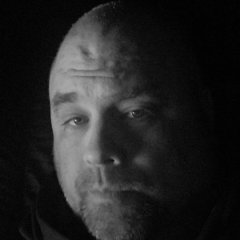
Twins Video
The Narrative: The former Twins front office leadership was slow to push pitchers up the ladder, especially in their first full professional season.
The 2019 Case: In 2019, Twins right-handed pitcher Cole Sands made his professional debut. He had been the Twins fifth-round draft pick in 2018 out of Florida State. After being drafted, he was shut down. He began the 2019 season in Cedar Rapids. He went 2-1 with a 3.05 ERA. After eight starts and just 41 1/3 innings with the Kernels, he was promoted to Ft. Myers. With the Miracle, he made nine starts and went 5-2 with a 2.25 ERA in 52 innings. He ended the season with one start at Double-A Pensacola in which he gave up two runs in four innings. He threw a total of 97 1/3 innings in his first full season.
I have seen it written or spoken about in a few places over the last couple of years that under the previous regime, the Twins would likely not have pushed a college pitcher like Sands quite as quickly. Is that true? Is that a fair critique?
Obviously there is no perfect way to analyze this. Pitcher development (like hitter development) is very much dependent upon the individual.
However, I wanted to go back several seasons and find out if the previous Twins regime had any (or many, or lots, or no) cases that fit the model that we saw in 2019 with Cole Sands.
What are those qualifications to meet? So I went back through all of the Twins drafts from 2001 through 2019. I looked for these two things from each pitcher drafted out of college. If, in his first full professional season, the pitcher did one or both of them, I included him.
- Did the pitcher reach AA (or AAA)? Sands made one start at AA, or
- Did the pitcher pitch at three or more levels? Sands pitched at Low-A, High-A and AA.
With that, let’s take a look at the Twins history this century.
CURRENT REGIME (2017-2019)
- Cole Sands (5th round, 2019) - Pitched at three levels. Reached AA in 2020.
PREVIOUS REGIME
- Tyler Jay (1st round, 2015) - Pitched at two levels, High-A and AA in 2016..
- Nick Burdi (supp 1st, 2014) - Pitched at two levels, High-A and AA in 2015.
- Jake Reed (5th round, 2014) - Pitched at two levels, High-A and AA in 2015.
- DJ Baxendale (10th round, 2012) - Pitched at two levels, High-A and AA in 2013.
- Pat Dean (3rd round, 2010) - Pitched at three levels, Low-A, High-A and AA in 2011.
- Logan Darnell (6th round, 2010) - Pitched at three levels, Low-A, High-A and AA in 2011.
- Kyle Gibson (1st round, 2009) - Pitched at three levels, High-A, AA and AAA in 2010.
- Billy Bullock (2nd round, 2009) - Pitched at two levels, High-A and AA in 2010.
- Carlos Gutierrez (supp 1st, 2008) - Pitched at two levels, High-A and AA in 2009.
- Matt Garza (1st round, 2005) - Pitched at four levels, High-A, AA, AAA and MLB in 2006.
- Kevin Slowey (2nd round, 2005) - Pitched at two levels, High-A and AA in 2006.
- Brian Duensing (3rd round, 2005) - Pitched at three levels, Low-A, High-A and AA in 2006.
- Glen Perkins (1st round, 2004) - Pitched at two levels, High-A and AA in 2005.
- Scott Baker (2nd round, 2003) - Pitched at three levels, High-A, AA and AAA in 2004.
- Jesse Crain (2nd round, 2002) - Pitched at three levels, High-A, AA and AAA in 2003.
- Adam Johnson (1st round, 2000) - Pitched at three levels, AA, AAA and MLB.
CONCLUSIONS
While this doesn’t dispute the studies done five years or so ago stating that the Twins were among the slowest, if not the slowest, to promote pitchers to the big leagues, this does show that the previous Twins regime was not afraid of pushing college pitchers quickly through the lower levels of the minor leagues. In fact, it happened most years.
This isn’t a scientific study. I have done nothing more than a quick search of Twins draft picks in Baseball-Reference, so it’s possible that I am missing something. Please feel free to let me know.
MORE FROM TWINS DAILY
— Latest Twins coverage from our writers
— Recent Twins discussion in our forums
— Follow Twins Daily via Twitter, Facebook or email
— Become a Twins Daily Caretaker






Recommended Comments
Join the conversation
You can post now and register later. If you have an account, sign in now to post with your account.
Note: Your post will require moderator approval before it will be visible.